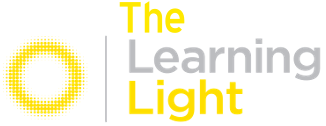Integration with learning management system (LMS) has been a hot topic for many years. But there are still many companies that have not implemented it. In this article, we will share with you 5 ways to integrate with the Learning Management System (LMS) and help enterprises training and development. As virtual instructor-led training (VILT) will continue to develop , more and more organizations are studying how to provide training more effectively. In fact, when it comes to L&D projects, there are many things to consider. Of course, there is also the usual training course content, design and delivery. But more importantly, everything needs to be seamlessly connected for L&D and HR leaders to cope with it easily.
This is the role of integration . The main goal of each integration project is to improve the training experience of trainees while simplifying the administrator experience. This involves integrating training solutions in the learning management system (LMS) or learning experience platform (LXP).

As you know, learning management system (LMS) is the most common industry term for training platforms. This is a software used to store, deliver and track training content. For example, there are Zhixueyun, Yunxuetang, and Times Guanghua in China, and Cornerstone, Talentsoft and Skillsoft in foreign countries.
On the other hand, the Learning Experience Platform (LXP) is a training platform that can plan and aggregate learning content to provide users with a personalized and adaptive learning experience . Common learning experience platforms (LXP) are Degreed and EdCast.
The advantage of these online training platforms is that you can easily integrate external learning solutions and content in them. Some of the most common types of learning system integration are:
• SCORM (Sharable Content Object Reference Model) is an industry technical standard for online learning and training. It can ensure that the SCORM software package can communicate with almost all learning management system (LMS) environments and maintain good communication.
• SAML (Security Assertion Markup Language ) transfers information about users, login names, and other attributes and credentials between identity providers (clients) and service providers (training solution providers). There are 2 ways to trigger SAML integration: (a) the student clicks a button on a specific internal website (intranet), and (b) the student triggers the URL created by the provider for the client.
1. Easy access to the learning platform through single sign-on (SSO)
First of all, one of the most important and practical benefits of Lms Management Services solutions into the learning management system (LMS)/learning experience platform (LXP) is easy access. This allows students to log in to a specific learning portal to access their training courses without having to use a separate login account (user name and password).
2. Real-time training registration
The biggest advantage of learning system integration is that it not only makes the students’ learning more efficient, but also makes the work of the heads of learning in the human resources department and the L&D department easier.
First, the integration can create an instant (OTF) student profile in a few seconds. This means that the training manager no longer needs to send a detailed list of all the trainees who will register to participate in the training program to the supplier, which is equivalent to greatly reducing the workload.
Through the OTF function, the automatic allocation of learning credits to the account can also be completed within a few seconds, making the deployment and access of training smoother than ever.
Some other benefits of using OTF for integration are:
• You no longer need to wait a few days in order to register students (different from manual registration).
• There is no need to obtain student information via e-mail.
• No manual operation is required.
3. Increase the traffic of your learning management system (LMS) and learning experience platform (LXP)
The integration allows your students to easily access the training courses in the enterprise’s internal learning management system (LMS)/learning experience platform (LXP), which will also greatly increase the access flow of your learning system. When students get a smooth user experience in your learning management system (LMS)/learning experience platform (LXP), they will try to access the learning management system (LMS)/learning experience platform (LXP) more and explore how They provide other training courses to improve skills and acquire new skills.
More importantly, training managers and human resource professionals usually use the flow of learning platforms as key performance indicators for assessing training participation and compliance, even if this is only a superficial level.

4. Automatic report generation and evaluation
The role of integration is not only to allow the training project leader to have a smoother user experience and a more efficient management process. Integration can also help your students generate automatic reports and assessments. In fact, with SCORM, you can easily access automatically generated student reports and other data in your learning management system (LMS).
For example, when the goFLUENT solution is integrated into the customer’s learning management system (LMS)/learning experience platform (LXP), the training data is directly uploaded by goFLUENT to the customer’s online learning system, making it easier and faster for the person in charge of training Collect training indicators and track the progress of trainees.
5. Manage data more easily through the HR portal
Since training data and reports are sent directly to your learning management system (LMS)/learning experience platform (LXP), it is easier for training managers and learning leaders to monitor the progress of the students and generate customized reports based on needs and goals.
For example, goFLUENT sends training data directly to the customer (via the data source) according to the customer’s request. In this way, since customers no longer need to operate, the monitoring of training projects becomes more efficient and time-saving.


